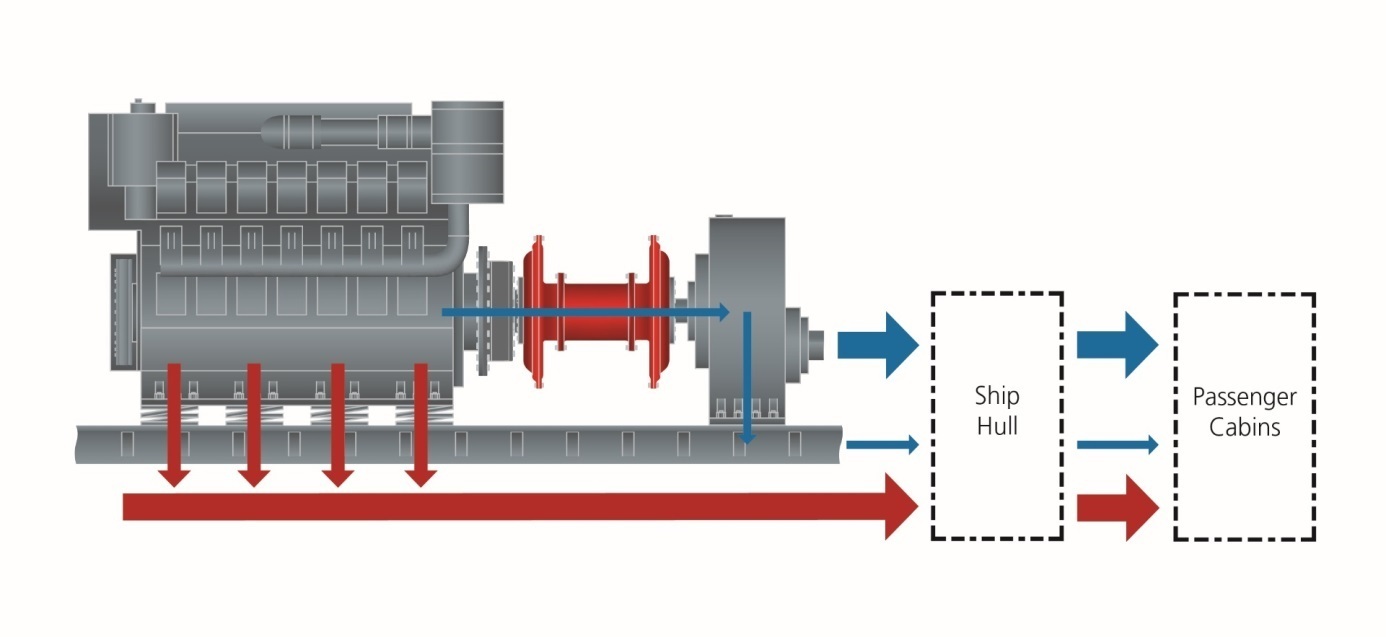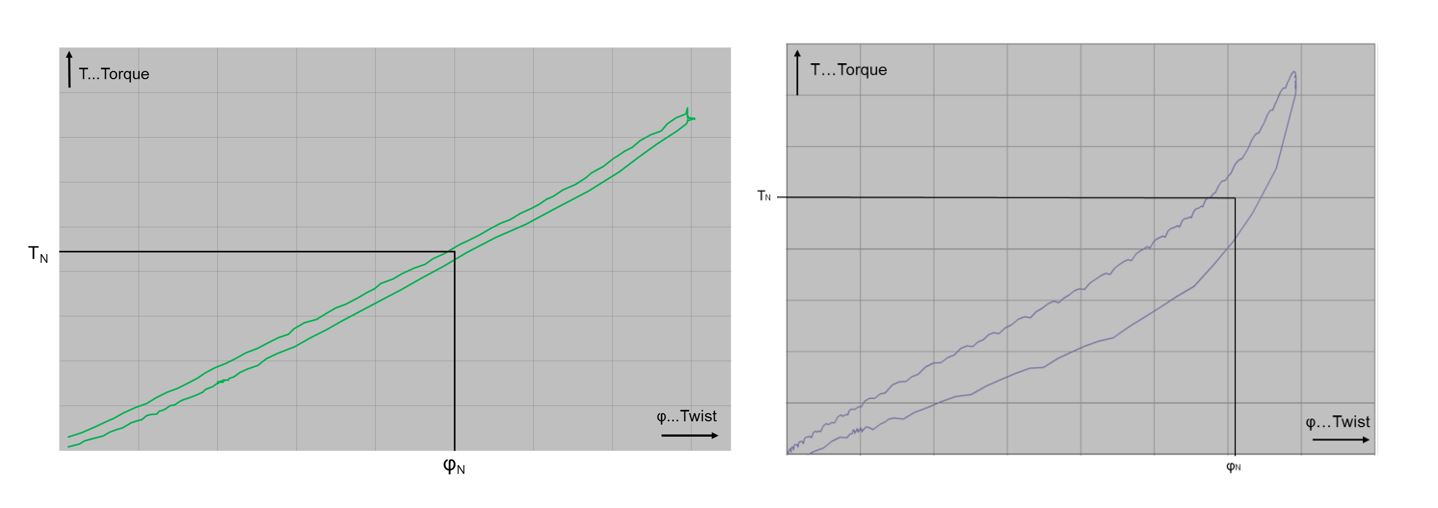SHARE ON:
Link copied!
The improvement of powertrain components in terms of acoustics is becoming more and more important. For sound sensitive installations, it is now common that the vibratory torque should be reduced to only 3% of the nominal torque, or even lower.
Additionally, due to improved engine mounts, the main cause of acoustic problems is no longer that the vibratory torque is being directly transferred over the engine mounts to the hull structure. According to figure 1 the main reason is the secondary path (marked in blue), which is transferred via the coupling and the gearbox’s hard elastic mounting to the hull.
In order to reduce the noise and keep the vibratory amplitudes small it may be necessary to apply a torsional elastic coupling which has to be rather soft. Unfortunately, for small twist amplitudes the dynamic stiffness of couplings is known to be increasing.
Therefore, Geislinger has invented the NCA type coupling – a relatively soft, torsional elastic steel spring coupling, with very low friction. Using specially designed single springs, the NCA coupling type is designed to eliminate the vibratory torque in the gearbox input shaft. This special coupling design results in a very low friction in the coupling, which is the key to a slowly increasing dynamic stiffness, see figure 2.
Measurement results show that this coupling type has a very slow increasing dynamic stiffness and is furthermore mostly independent of frequency, static preload and ambient temperature. These measurements were performed at the Geislinger headquarter on a specifically designed test rig, which can measure very low vibratory torques.
The main result of these measurements is the friction hysteresis of this coupling. Figure 3 shows a comparison of the friction hysteresis of a silicone elastomer coupling (right) and a NCA type coupling (left).
The results show clearly, that the dynamic stiffness, defined as the ratio of the vibratory torque to the vibratory twist, is lower for the NCA coupling, due to its significantly slimmer hysteresis, see figure 4. Additionally, the NCA’s friction hysteresis stays almost linear, indicating that the dynamic stiffness of an NCA type coupling is mostly independent of increased static preload.
This low-friction coupling type for acoustic applications is just one example, where a Geislinger coupling can be the optimal solution.
Consequently, Geislinger can provide many different coupling types with various damping and stiffness properties in order to select the optimal coupling in terms of size, reliability and specific application requirements.
Further information can be found in the following paper:
C. Mühlberger, K. Prenninger, J. Krah, M. Geislinger: Influence of damping factors on coupling applications Torsional Vibration Symposium, Salzburg, 2017

